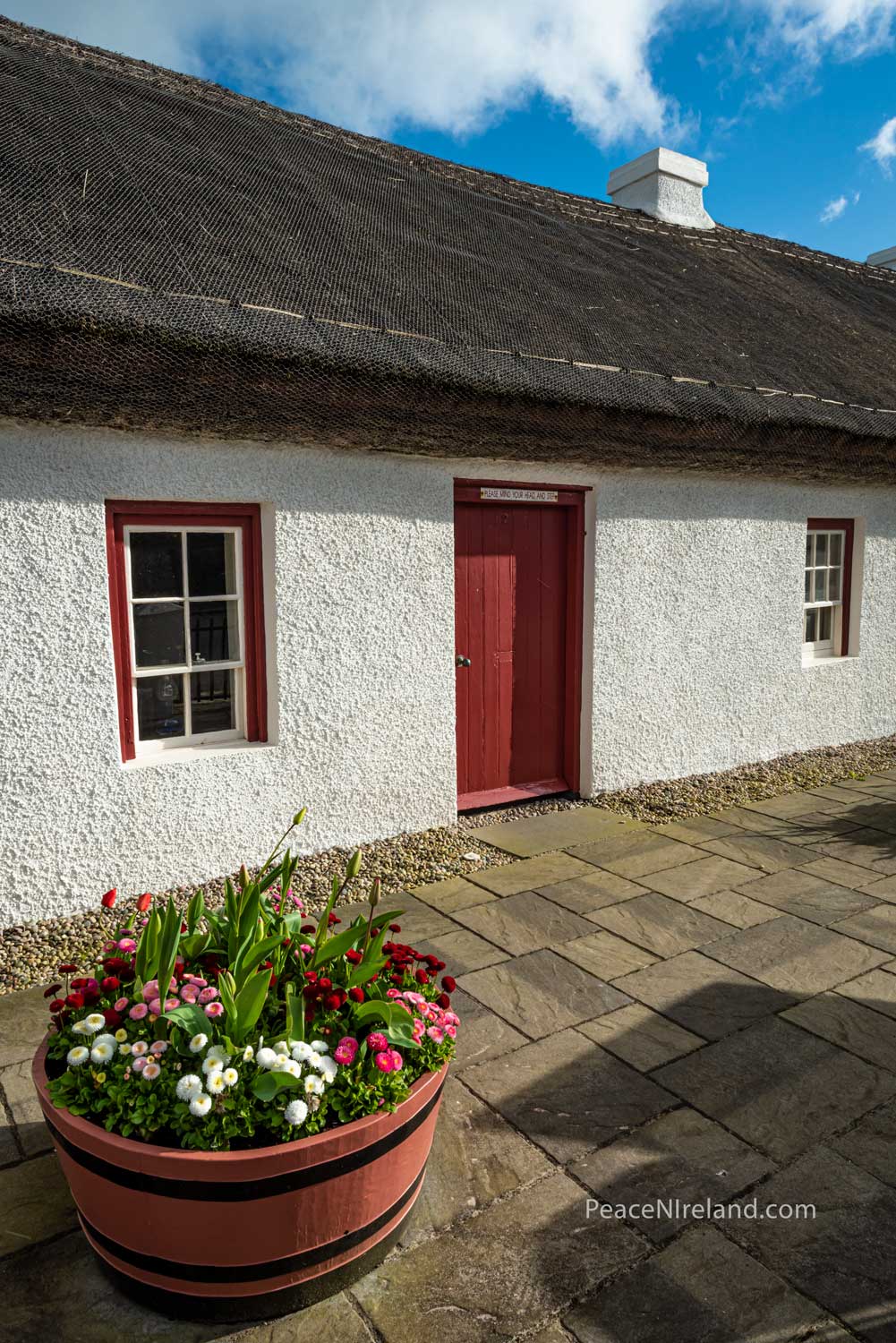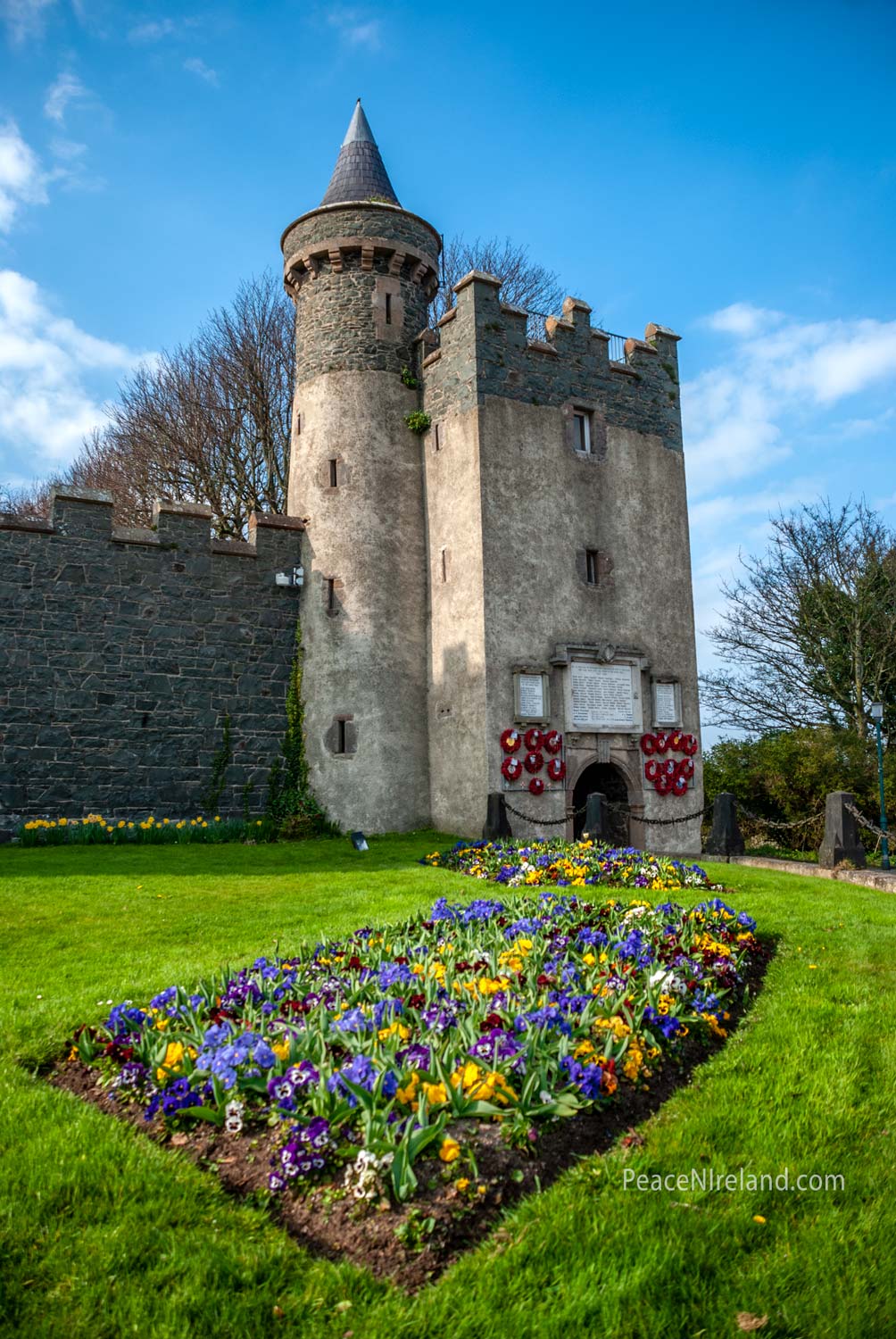callisterni
Posts by :
The American Military Cemetery in Belfast

Hidden in the hills just outside Belfast at Lisnabreeny, stands a memorial to 148 American servicemen who died in Northern Ireland during World War Two. This is a former American military cemetery – the resting place for US servicemen between 1943 and 1945.
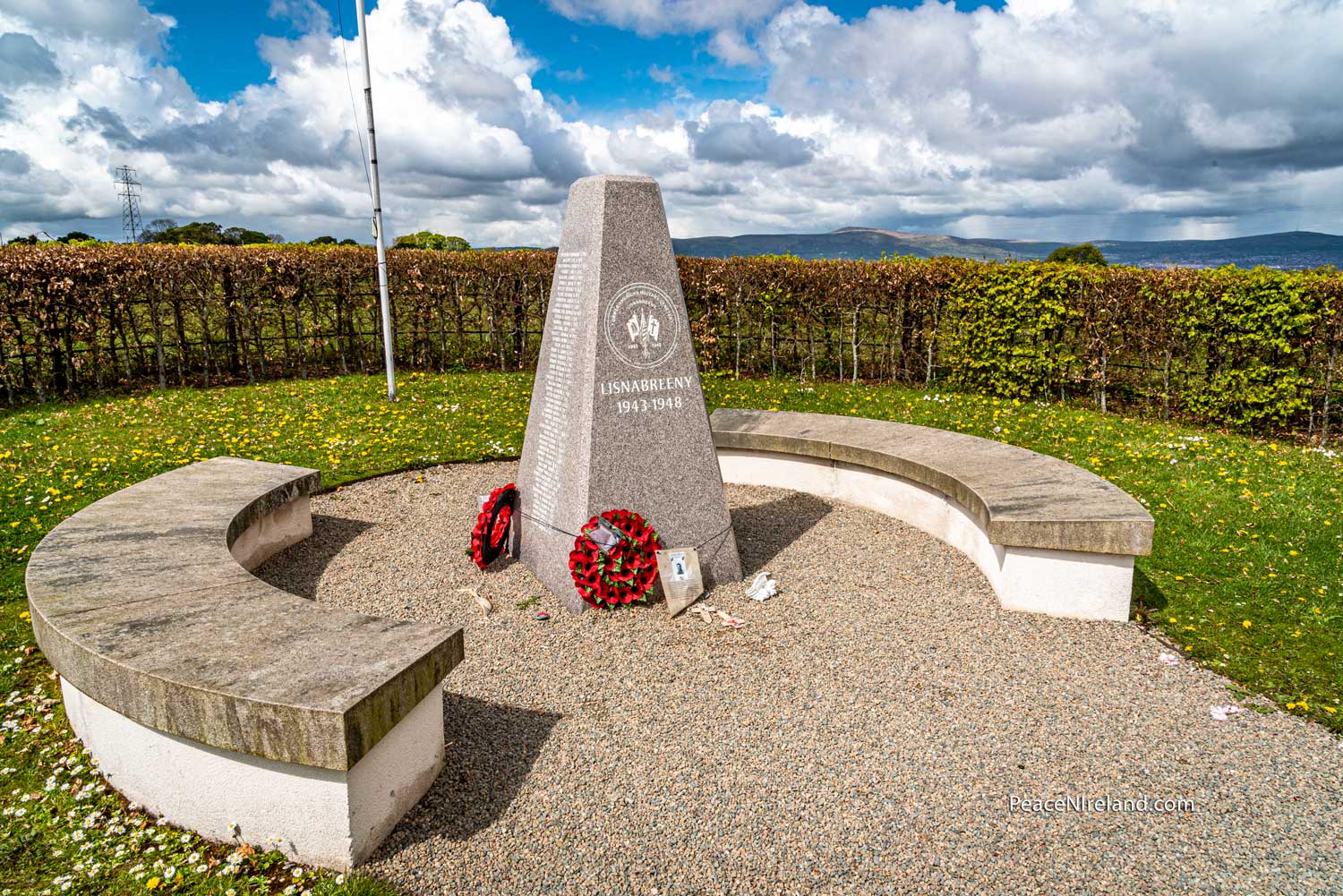
American troops were first deployed in Northern Ireland in January 1942. The number reached a peak of 120,000 in June 1944, and by the time the war ended in 1945, around 300,000 US personnel were stationed or had passed through Northern Ireland. The dead included members of the US Army and Navy, but most were members of the Air Forces. They had died from natural causes, road traffic accidents, or during training, and about 40 men died in Air Accidents.The identities of eight servicemen who were buried here, remain unknown.

Before this cemetery was opened in December 1943, American troops who died on duty in Northern Ireland were buried in cemeteries in Belfast and Londonderry. Their remains were then transferred to this cemetery at Lisnabreeny in 1943, and it became the only burial place for American military personnel in Ireland until it closed in 1948. The remains of those who were not repatriated to the US at their families request now lie in Cambridge American Cemetery and Memorial, England.

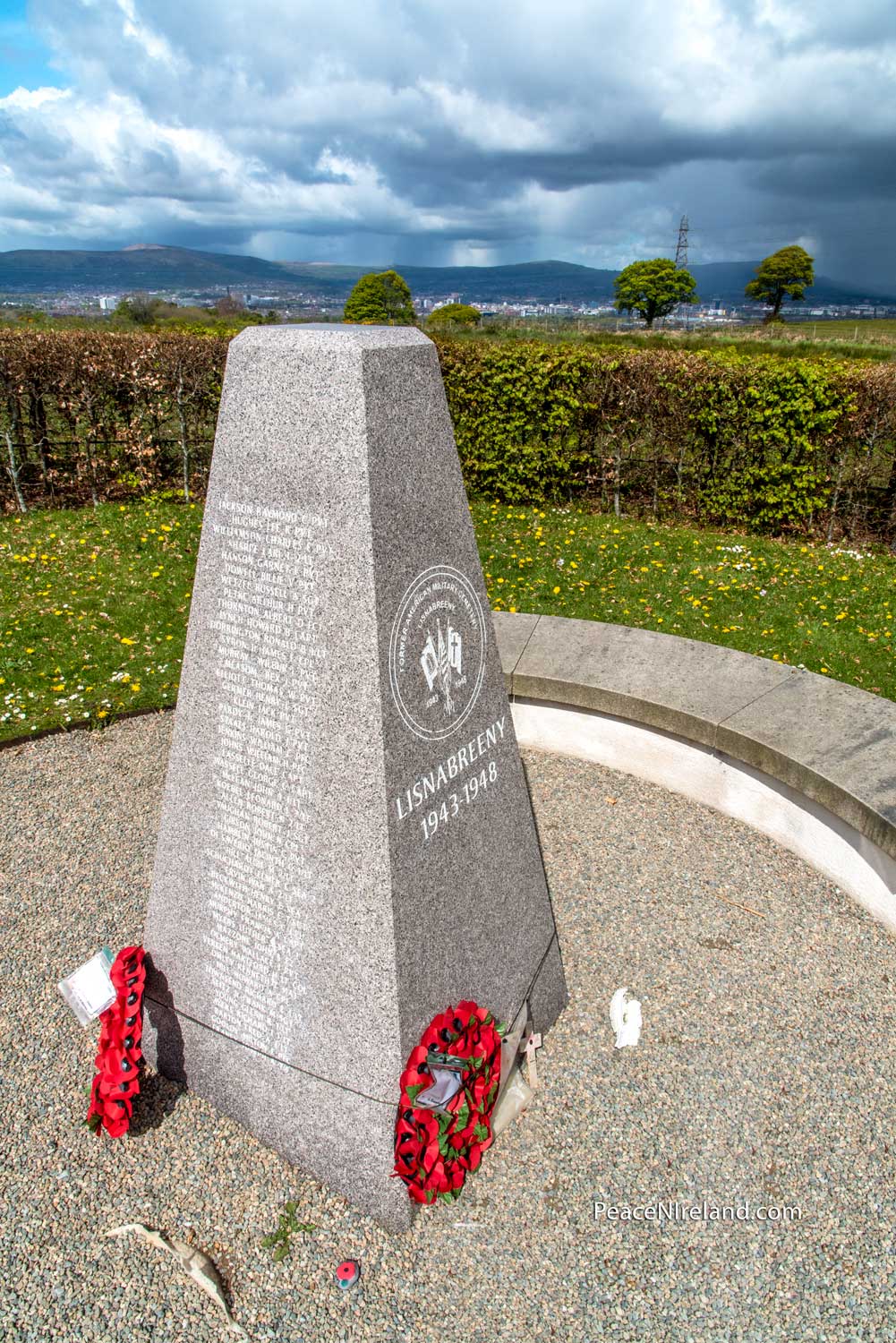
The townland of Lisnabreeny is in the Castlereagh Hills, 170 metres above sea level. It’s just a few miles southeast of Belfast, which can be seen in the distance, along with the Belfast Hills.
This granite monument with the names of the 148 men inscribed on three sides, was unveiled by the local council in 2013 as part of a new memorial garden on the former cemetery site. It was constructed as a permanent reminder of the American sacrifice on Northern Ireland soil during WW2.
The monument was unveiled by the local council in 2013 as part of a new memorial garden on the former cemetery site. It was constructed as a permanent reminder of the American sacrifice on Northern Ireland soil during WW2. At the dedication service, Air Vice-Marshall David Niven stated, “We are commemorating the service and sacrifice of our servicemen during the Battle of Britain; a battle which prevented the invasion of the United Kingdom. We are also remembering, at the Service of Dedication of this cemetery, the sacrifice of our American Allies who served and died, here, in Northern Ireland. They came from the United States to fight alongside us, in our hour of need, when the rest of Europe had been overrun by the Nazi war machine.”

A woman tends the grave of Corporal John “Jack” Gibson who was killed when B17 41-24451 crashed on Slieveanorra on 3rd October 1942. Photo taken at Lisnabreeny American Cemetery, Castlereagh, Belfast and published in Duluth News Tribune. Copyright unknown.
The true story about a Coleraine boy, Cream Cakes, and an American Sergeant during WW2. Read time around 1’30” Click HERE.
Got a wartime story about American soldiers in Northern Ireland? We’d love to hear about it. Please send an email to info@peacenireland.com
Be yourself: Ralph Waldo Emerson

Strangford Lough with bridge giving access to Mahee Island, County Down
Nendrum 5th Century Monastic Site
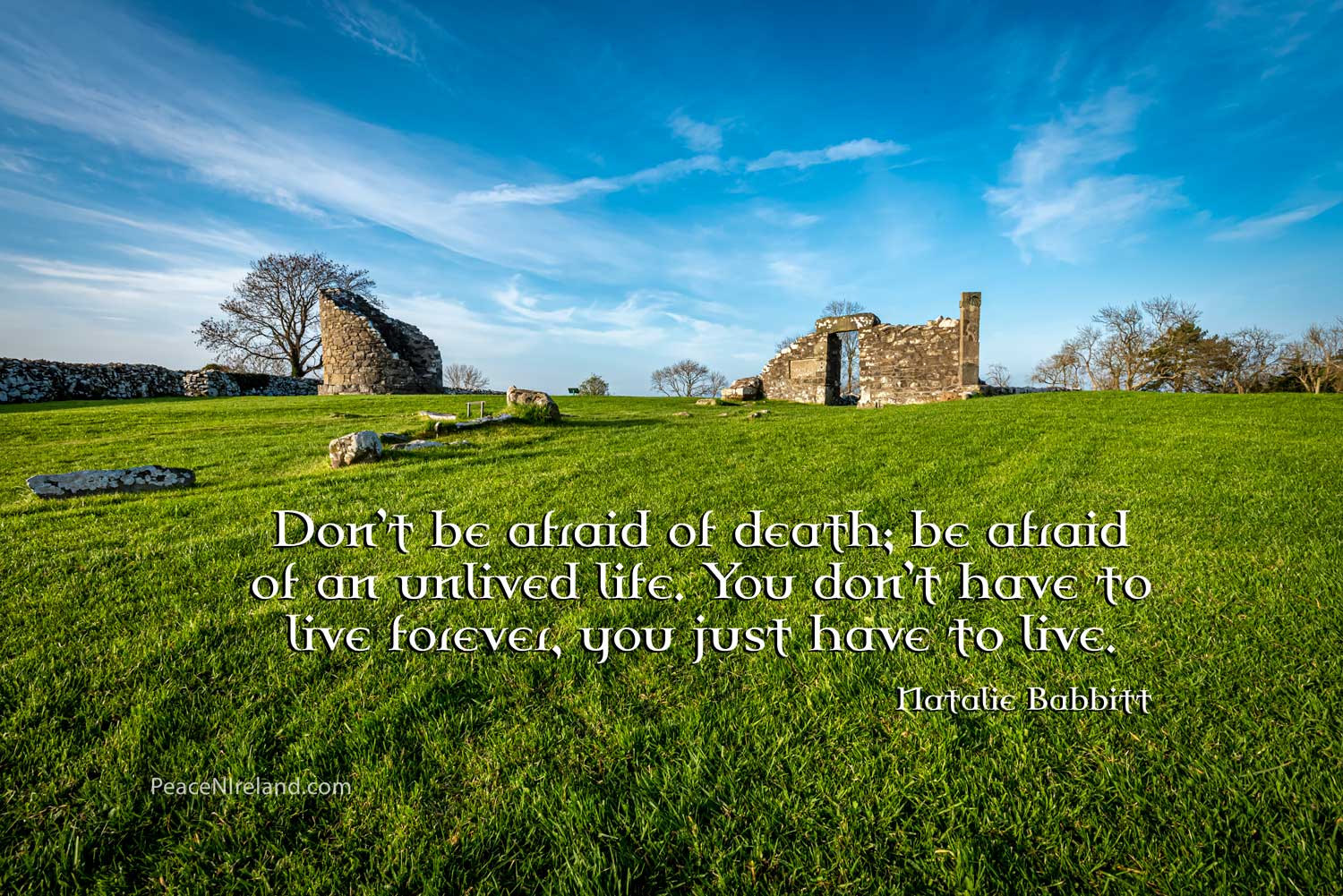
On an ancient Christian monastic site at Mahee island in Strangford Lough, County Down, stands the remains of the 5th Century Nendrum Monastry, said to be associated with St Patrick. It is thought to have been set up by Saint Machaoi, after whom Mahee island is named.
This site at Nendrum is considered to be the best example of a pre-Norman monastic site in Northern Ireland, with some of the ruin still visible. Although the monastery came to an end some time between 974 and 1178, its church served a parish until the site was abandoned in the 15th Century.

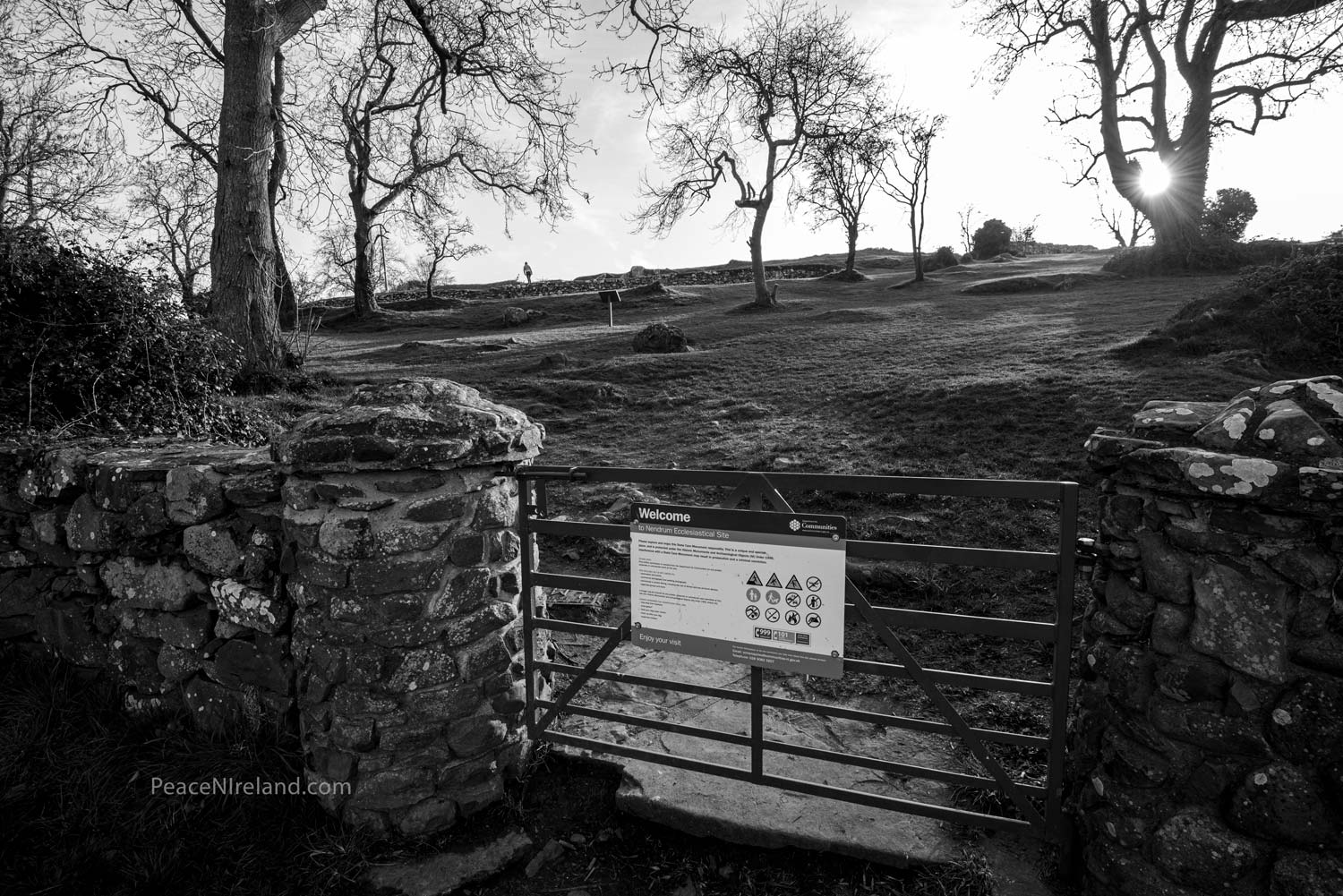

Full picture set of Nendrum Monastic Site with music by Belfast composer, Paul Reid.
Mahee Castle

The ruin of Mahee Castle on Mahee Island, County Down
On Mahee Island in Strangford Lough, guarding a bridge and the only land crossing to the island, stands Mahee Castle. The name ‘Mahee’ is derived from Mochaoi who was the saint traditionally considered to have founded the monastery at Nendrum, the ruins of which are just a short distance away.

The castle was built by Captain Thomas Browne, an English soldier, and is conventionally dated to c.1570. Archaeological excavations were carried out at the castle during 2001 and 2002, which included detailed stratigraphic sequencing. This revealed remnants dating to the Late Mediæval period, meaning that the building could have existed before 1570. The archaeological finds consisted of shells and animal bones, knives and an array of pottery ranging over several centuries. Large quantities of modern glass were found, in addition to flint and pot shards.
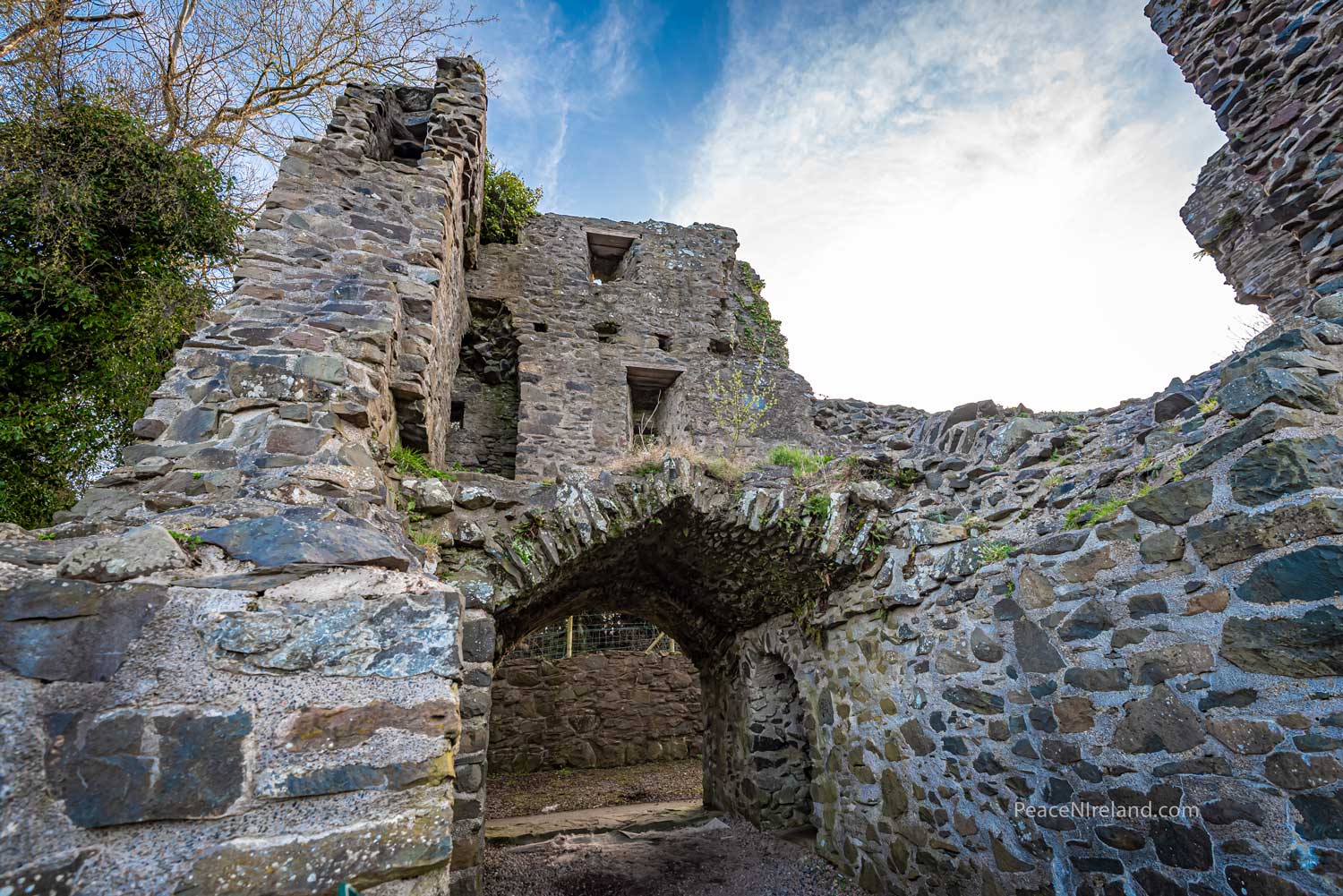
By the early 17th century, the castle was abandoned and fell into disrepair. In 1923, H.C. Lawlor and the Belfast Natural History and Philosophical Society partly renovated the tower house which is three stories tall, although little remains of the upper floors. As part of this work, ivy was removed from the wall, cracks were grouted with cement, the top was waterproofed and a buttress wall was built to support the northeast corner of the tower.
Mahee Island is the largest island in Strangford Lough, and is situated five kilometres to the southeast of Comber.
The Martello Tower: Magilligan Point

The Martello Tower, Magilligan Point, County Londonderry.
The Martello Tower at Magilligan Point, is an important historical site in County Londonderry. Built in 1812, the tower was strategically positioned at the entrance to Lough Foyle, so that a 24-pounder cannon, mounted on the top, could be fired against any invading fleet. The round structure had massively thick walls and a flat top so that a gun could be pointed in any direction.
The tower was built to withstand a seige, being built on top of a spring, so that any troops trapped inside would at least have a supply of fresh water. There were living quarters below the gun platform and the ground floor was used to store powder and ammunition.
The tower is located in a picturesque setting looking out over the Atlantic Ocean, close to the lovely beach of Benone Strand. From here, there is a splendid view of Greencastle and the Donegal Hills on the other side of Lough Foyle.
Martello Towers are named after a fort at Mortello Point in Corsica, which successfully withstood bombardment from the British Royal Navy in 1794 during the Napoleanic wars. The British were so impressed with the strength of the tower that they copied the design and built their own, placing them in strategic locations around the coast of England and Ireland. This one at Magilligan is one of the most northerly in Ireland. There is a similar tower in Greencastle, on the other side of Lough Foyle.
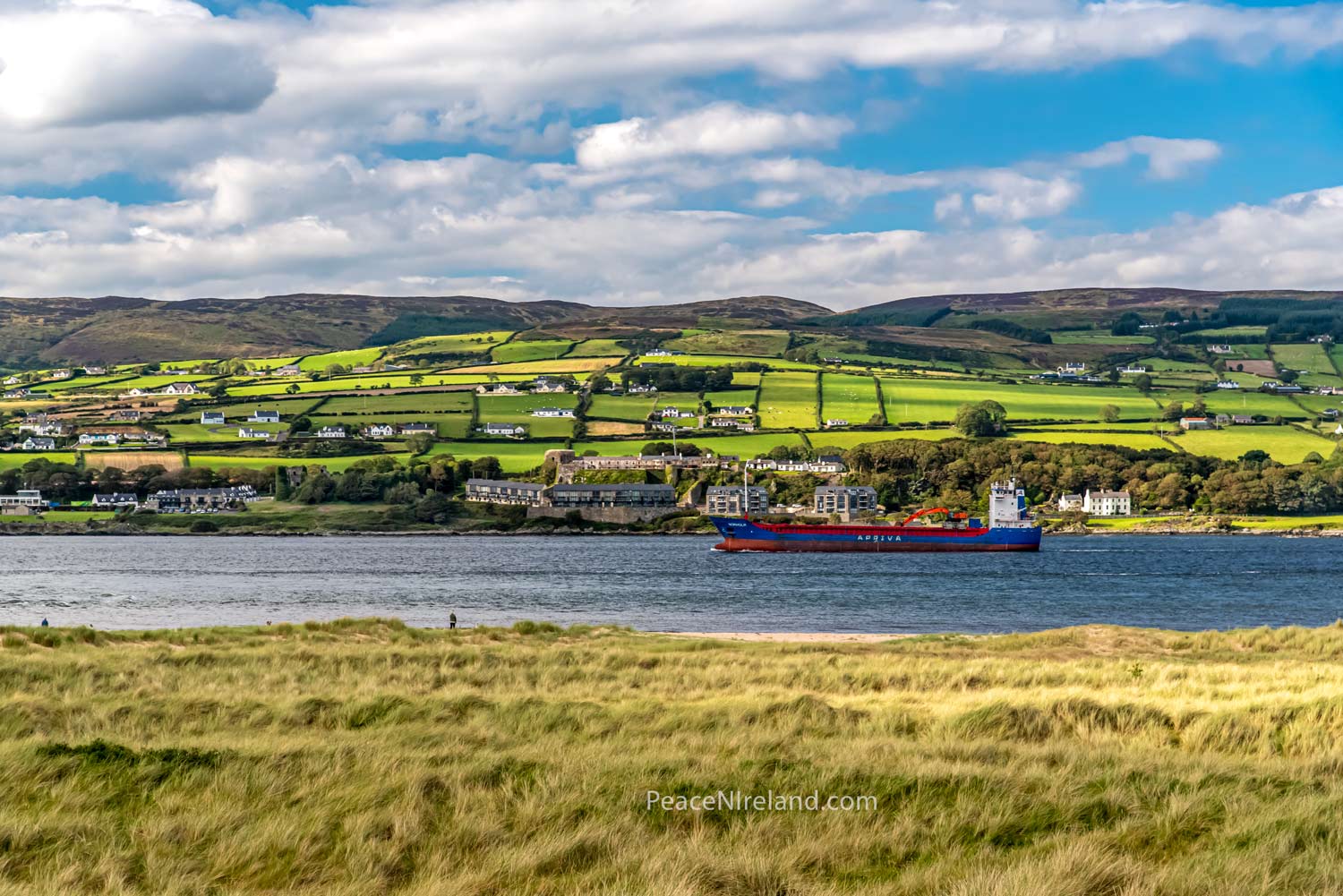
The tower was a defence against any invading fleet entering Lough Foyle

Just across the sand dunes, Benone Strand, a popular beach in Northern Ireland
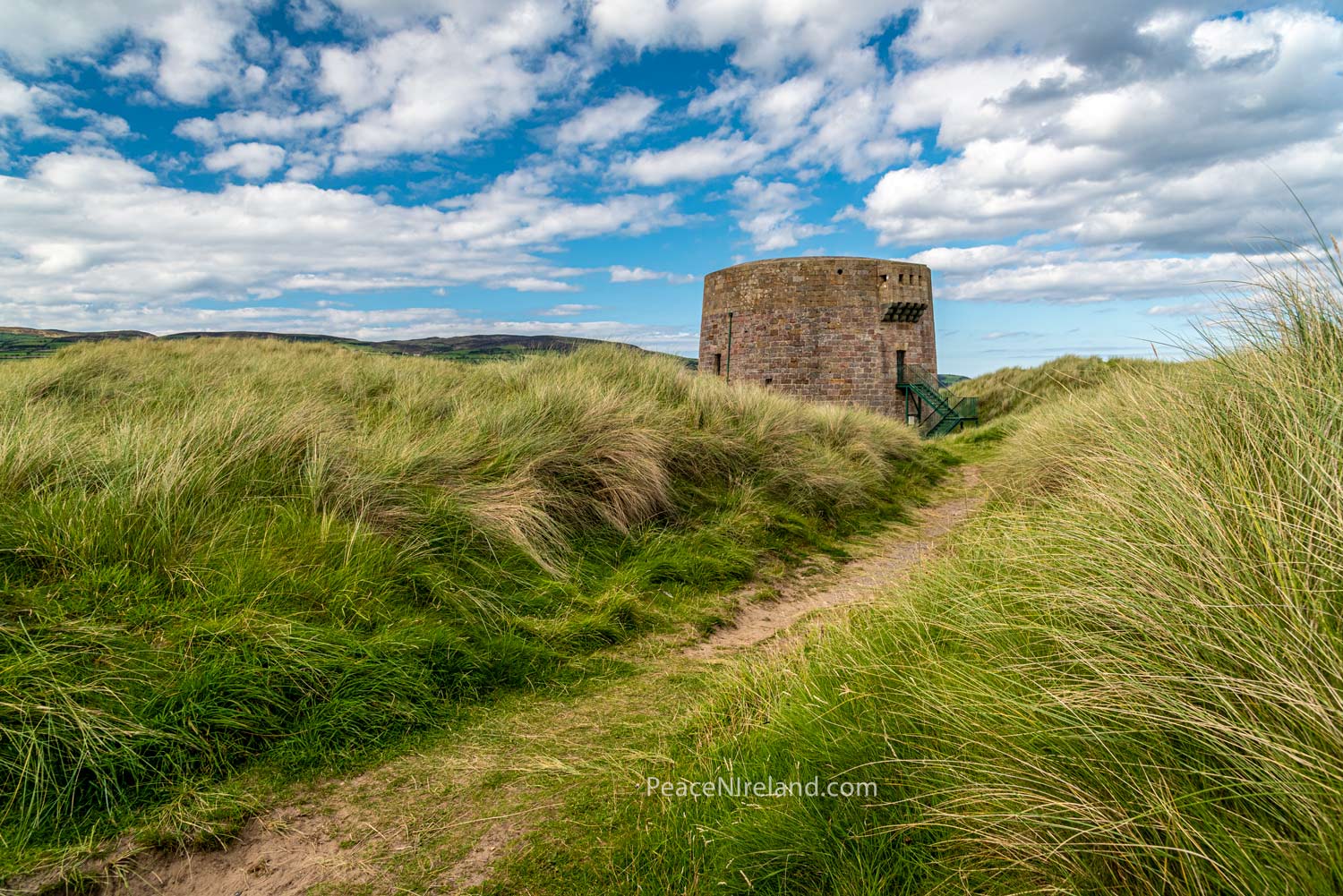
There were no further attempts to invade Ireland after 1798 and the garrison stationed here didn't ever need to fire a shot.
Andrew Jackson Cottage/US Rangers Museum

Today’s post shows the ancestral home of Andrew Jackson, 7th President of the United States. The original building was a traditional thatched cottage from the 1750s, which has been refurbished. It was the home of Andrew Jackson’s parents before they emigrated to South Carolina around 1765.
The site, at Boneybefore, close to Carrickfergus town in County Antrim, Northern Ireland, also houses the US Rangers Museum, paying homage to the soldiers of the First Battalions of the elite US Rangers.
The cottage is a tourist attraction and open to the public five days a week, although currently temporarily closed to the public due to COVID restrictions.

Andrew Jackson lived from 1767 – 1845 and was an American lawyer, soldier, and statesman, before taking office as the seventh President of the United States from 1829 to 1837.

The plaque reads:
The parents of 7th U.S. President Andrew Jackson emigrated from their cottage at Boneybefore to the Carolinas around 1765. They settled in the Waxhaw region. Arthur Dobbs, of Castle Dobbs, Carrickfergus, was governor of North Carolina at this time.
DiscoverUlsterScots.com

